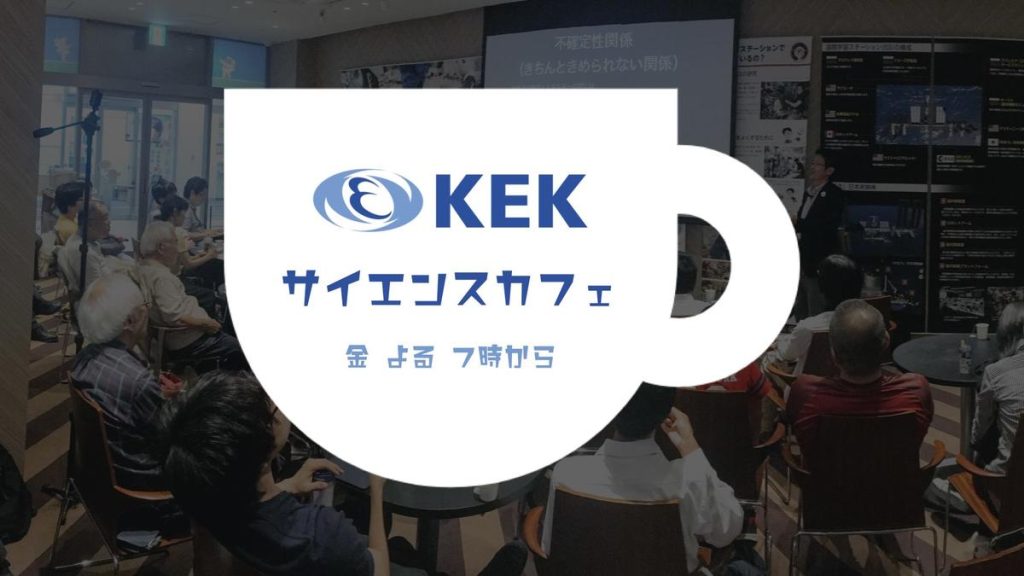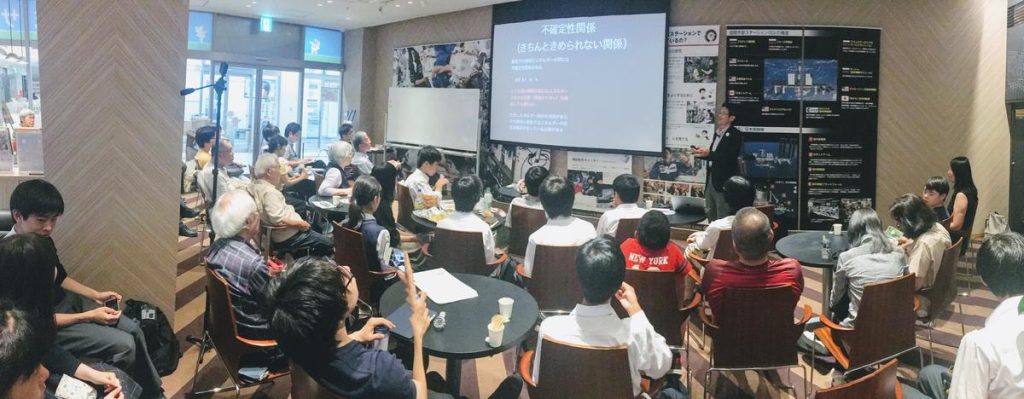
開催日と話題提供者
2019年02月01日 116杯目 髙橋将太(KEK広報室 科学コミュニケータ)
2019年02月08日 117杯目 高崎史彦(KEK名誉教授)
2019年02月15日 118杯目 Oskar Hartbrich(ハワイ大学・Belle II 実験コラボレータ)
2019年02月22日 119杯目 Daniel Jeans(KEK素核研 准教授)

開催場所と時間
場所 つくば総合インフォメーションセンター(BiVi つくば2階)
時間 19:00 ~ 20:00 (18:30 開場、20:30 退出完了)
定員 約30名(予約不要)
備考 飲食物持ち込み可/事前予約は不要です/立ち見でもご参加いただけます
KEKサイエンスカフェとは
毎週金曜日、つくば駅前で開催している”サイエンス・カフェ”です。 若手研究者を中心に話題を提供してもらい、最先端の研究成果や研究の面白さ、研究者のプライベートにまつわる話など、参加者も一緒に気軽に議論・雑談できる場です。 予約不要かつ入退出自由。微量ではありますが、お茶・お菓子も用意しています。
「科学のまち・つくば」の雰囲気に触れてみたい方、素粒子物理学の世界に足を踏み入れようかなと迷っている学生さん、KEKの研究内容の勉強&研究者と知り合いたいメディア関係者などなど、どなたでもお気軽にお立ち寄りください。
テーマは毎月変えていますが、その月の各回の内容は基本的に同じです。 前の週の話の内容が必須の連続した内容ではありません。 都合の合った日に月イチでふらっと立ち寄るのもよし、毎週聞いて少しずつ理解を深めるのもよし、基礎科学好きな同志を得るのもよし、それぞれスタイルに合った楽しみ方を見つけいただければ嬉しいです。
このカフェで話をしてみたい研究者、運営に協力したいという研究機関も大歓迎です。 その際は広報室・髙橋将太までお問い合わせください。
金曜日がお盆や年末年始、祝日などと重なる場合、連休と近い場合などはおやすみにします。
ひと月の中でもテーマを変えることがあります。
